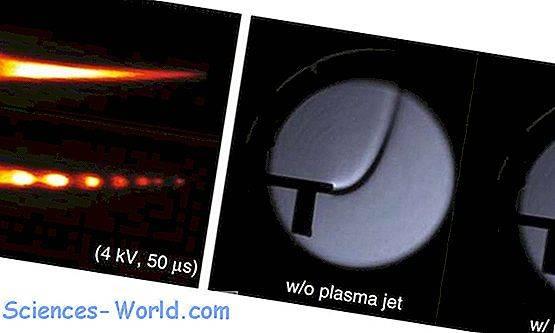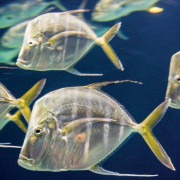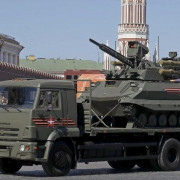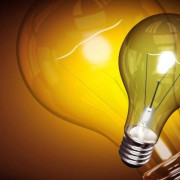Паруса в виде колонн: эффект магнуса
Содержание:
Глобальное использование файла
Данный файл используется в следующих вики:
- Использование Magnus effect.svg
Magnuseffek
в af.wikipedia.org
- Использование Magnus effect.svg
Эфэкт Магнуса
в be-tarask.wikipedia.org
- Использование Magnus effect.svg
Эфект Магнуса
в be.wikipedia.org
- Использование Magnus effect.svg в ca.wikipedia.org
- Aparell vela-rotativa
- Efecte Magnus
- Heinrich Gustav Magnus
- Использование Magnus effect.svg
Magnusův jev
в cs.wikipedia.org
- Использование Magnus effect.svg в de.wikipedia.org
- Effet
- Heinrich Gustav Magnus
- Bananenflanke
- Portal Diskussion:Schifffahrt/Archiv Segeln Mitarbeit Teil2
- Benutzer:V.R.S./Archiv/Facharbeit
- Diskussion:Magnus-Effekt/Archiv/1
- Использование Magnus effect.svg
Φάλτσο (ποδόσφαιρο)
в el.wikipedia.org
- Использование Magnus effect.svg
Topspin
в en.wikipedia.org
- Использование Magnus effect.svg
Robert Adair (physicist)
в en.wikiquote.org
- Использование Magnus effect.svg в es.wikipedia.org
- Efecto Magnus
- Aparejo vela-rotativa
- Использование Magnus effect.svg
Magnus efektua
в eu.wikipedia.org
- Использование Magnus effect.svg в fr.wikipedia.org
- Théorie des profils minces
- Balle tire-bouchon
- Использование Magnus effect.svg
Efecto Magnus
в gl.wikipedia.org
- Использование Magnus effect.svg в he.wikipedia.org
- משתמש:NadavN/אפקט מגנוס
- אפקט מגנוס
- שיחת משתמש:Adir.sh
- סיבוב עילי
- Использование Magnus effect.svg
Magnus-effektus
в hu.wikipedia.org
- Использование Magnus effect.svg
Մասնակից:DaemonDice/M:Cookies01
в hy.wikipedia.org
- Использование Magnus effect.svg в ja.wikipedia.org
- マグヌス効果
- トップスピン
- Использование Magnus effect.svg
마그누스 효과
в ko.wikipedia.org
- Использование Magnus effect.svg
Magnusa efekts
в lv.wikipedia.org
- Использование Magnus effect.svg в nl.wikipedia.org
- Tennis van A tot Z
- Magnuseffect
- Использование Magnus effect.svg
Efekt Magnusa
в pl.wikipedia.org
- Использование Magnus effect.svg
Efeito Magnus
в pt.wikipedia.org
- Использование Magnus effect.svg
Эффект Магнуса
в ru.wikipedia.org
- Использование Magnus effect.svg
Portál:Fyzika/Obrázok týždňa/39
в sk.wikipedia.org
- Использование Magnus effect.svg в sr.wikipedia.org
- Узгон
- Magnusov efekat
- Использование Magnus effect.svg
Kontinuummekanik
в sv.wikipedia.org
- Использование Magnus effect.svg
Ефект Магнуса
в uk.wikipedia.org
- Использование Magnus effect.svg в vi.wikipedia.org
- Đường dòng
- Hiệu ứng Magnus
- Использование Magnus effect.svg
Q622975
в www.wikidata.org
- Использование Magnus effect.svg в zh.wikipedia.org
- 马格努斯效应
- 上旋球
Примечания
Wikimedia Foundation
.
2010
.
Смотреть что такое «Эффект Магнуса» в других словарях:
эффект Магнуса
— Magnuso reiškinys statusas T sritis fizika atitikmenys: angl. Magnus effect vok. Magnus Effekt, m rus. эффект Магнуса, m; явление Магнуса, n pranc. effet Magnus, m … Fizikos terminų žodynas
Эффект Магнуса при воздействии на вращающийся шар Эффект Магнуса физическое явление, возникающее при обтекании вращающегося тела потоком жидкости или газа. Образуется сила, воздействующая на тело и направленная перпендикулярно направлению потока … Википедия
Магнуса эффект
— Магнуса эффект. МАГНУСА ЭФФЕКТ, возникновение поперечной силы Y, действующей на тело, вращающееся в обтекающем его потоке жидкости или газа; направлена всегда от той стороны вращающегося тела, на которой направление вращения и направление потока… … Иллюстрированный энциклопедический словарь
Магнуса эффект
Энциклопедия «Авиация»
Магнуса эффект
— Магнуса эффект. Магнуса эффект (по имени немецкого учёного Г. Г. Магнуса, G. G. Magnus) возникновение поперечной силы при обтекании вращающегося тела однородным потоком жидкости или газа. Эта сила направлена к той стороне вращающегося тела … Энциклопедия «Авиация»
Возникновение поперечной силы Y, действующей на тело, вращающееся в обтекающем его потоке жидкости или газа; Y направлена в сторону, где направление скорости потока υ и направление вращения тела совпадают. Открыт Г. Г. Магнусом в 1852. * * *… … Энциклопедический словарь
Возникновение поперечной силы, действующей на тело, вращающееся в набегающем на него потоке жидкости (газа); открыт нем. учёным Г. Г. Магнусом (Н. G. Magnus) в 1852. Напр., если вращающийся бесконечно длинный круговой цилиндр обтекает безвихревой … Физическая энциклопедия
— (по имени немецкого учёного Г. Г. Магнуса, G. G. Magnus) возникновение поперечной силы при обтекании вращающегося тела однородным потоком жидкости или газа. Эта сила направлена к той стороне вращающегося тела, на которой направления вращения и… … Энциклопедия техники
Возникновение поперечной силы Y, действующей на тело, вращающееся в обтекающем его потоке жидкости или газа; Y направлена в сторону, где скорость потока v и вращение тела совпадают. Открыт Г. Г. Магнусом в 1852 … Большой Энциклопедический словарь
Сила, действующая на цилиндрическое тело (ротор) при вращении его в движущейся жидкости или газе (напр. в воздухе при ветре) и возникающая вследствие разницы давления. Эта сила перпендикулярна к направлению движения среды (в нашем примере к… … Морской словарь
Применение силы Магнуса
В начале 20 века, ученые предложили использовать эффект Магнуса для приведения в движение кораблей.
Немецкий инженер Антон Флеттнер заменил 420 квадратных метров паруса на шхуне двумя 15-метровыми стальными роторами паруса, которые вращались с помощью небольшого двигателя. Флеттнер показал, что ветер вокруг ротора паруса создавал силу, по бокам ротора паруса, двигая корабль вперед. В 1926 году судно пересекло Атлантический океан. Однако, Флеттнеру не удалось найти инвесторов, заинтересованных с ротор парусной тягой на кораблях. В то время цены на топливо были просто слишком малы и не было никаких экологических норм, ограничивающих вредные выбросы с корабля.
Позднее эффект Магнуса применен на танкере, принадлежащим датской компании Maersk и пассажирском судне. Эти суда оснащены вращающимися цилиндрами на их палубах. Установленные вертикально с высотой порядка 10 этажей эти “ротор паруса” могут сократить расход топлива до 10%. Экономия транспортной компании составила сотни тысяч долларов. Кроме того улучшается экология в результате уменьшения выбросов углекислого газа в атмосферу за одну поездку.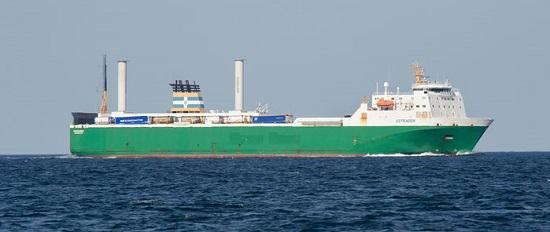
Ротор паруса работают по принципу аэродинамики известного как эффект Магнуса.
Сегодня более 90% товаров перевозится через океан, а китайский порт Шанхай оправляет по 36 миллионов контейнеров ежегодно. Коммерция портит окружающую среду, нарушает экологию: большинство судов сжигают мазут, выделяют диоксид углерода, а также сажу и соединения серы, которые способствуют выпадению кислотных дождей.
Physics
An intuitive understanding of the phenomenon comes from Newton’s third law, that the deflective force on the body is a reaction to the deflection that the body imposes on the air-flow. The body «pushes» the air in one direction, and the air pushes the body in the other direction. In particular, a lifting force is accompanied by a downward deflection of the air-flow. It is an angular deflection in the fluid flow, aft of the body.
Lyman Briggs made a wind tunnel study of the Magnus effect on baseballs, and others have produced images of the effect. The studies show that a turbulent wake behind the spinning ball causes aerodynamic drag, plus there is a noticeable angular deflection in the wake, and this deflection is in the direction of spin.
The process by which a turbulent wake develops aft of a body in an airflow is complex, but well-studied in aerodynamics. The thin boundary layer detaches itself («flow separation») from the body at some point, and this is where the wake begins to develop. The boundary layer itself may be turbulent or not, and that has a significant effect on the wake formation. Quite small variations in the surface conditions of the body can influence the onset of wake formation and thereby have a marked effect on the downstream flow pattern. The influence of the body’s rotation is of this kind.
It is said that Magnus himself wrongly postulated a theoretical effect with laminar flow due to skin friction and viscosity as the cause of the Magnus effect. Such effects are physically possible but slight in comparison to what is produced in the Magnus effect proper. In some circumstances the causes of the Magnus effect can produce a deflection opposite to that of the Magnus effect.
The above shows lift being produced on a back-spinning ball. The wake and trailing air-flow have been deflected downwards. The boundary layer motion is more violent at the underside of the ball where the spinning movement of the ball’s surface is forward and reinforces the effect of the ball’s translational movement. The boundary layer generates wake turbulence after a short interval.
On a cylinder, the force due to rotation is known as Kutta-Joukowski lift. It can be analysed in terms of the vortex produced by rotation. The lift on the cylinder per unit length, FL, is the product of the velocity, v (in metres per second), the density of the fluid, ρ (in kg/m3), and the strength of the vortex that is established by the rotation, G:
- FL=ρvG,{\displaystyle {\frac {F}{L}}=\rho vG,}
where the vortex strength is given by
- G=(2πr)2s=2πr2ω,{\displaystyle G=(2\pi r)^{2}s=2\pi r^{2}\omega ,}
where s is the rotation of the cylinder (in revolutions per second), ω is the angular velocity of spin of the cylinder (in radians / second) and r is the radius of the cylinder (in metres).
Лицензирование[править]
Gang65 из английской Википедии, владелец авторских прав на это произведение, добровольно публикует его на условиях следующей лицензии:
| Разрешается копировать, распространять и/или изменять этот документ в соответствии с условиями GNU Free Documentation License версии 1.2 или более поздней, опубликованной Фондом свободного программного обеспечения, без неизменяемых разделов, без текстов, помещаемых на первой и последней обложке. Копия лицензии включена в раздел, озаглавленный GNU Free Documentation License. Также налагаются дополнительные ограничения. |
| Атрибуция: Gang65 из английской Википедии | |
|
|
| Этот признак лицензирования был добавлен к этому файлу как часть обновления лицензии GFDL. |
Magnus, the Magnoceros[edit]
| Recommended Roles |
| Initiator Disabler Nuker Escape |
The master-smiths of Mt. Joerlak agree on only a single point: that the horn of a magnoceros is more precious than any alloy. And of all such horns, the largest and sharpest belongs to the beast they call Magnus. For half a generation, Magnus took easy sport goring hunters come to claim the treasures of his kin. Each time he would return to his cave with hooves and horns stained red, until his Matriarch urged him and all their kin to seek refuge to the north beyond the shadow of the mountain. But Magnus scoffed, having never failed to defend his people. The magnoceri would stay, he decided, for a magnoceros does not believe in chance… nor does it ever change its mind. But when Mt. Joerlak erupted without warning, and half his kin perished in the fire and ash, Magnus changed his mind after all. The survivors pushed north, until they reached a blockade watched over by a hundred hunters armed with bow and steel. Magnus expected no less. He led his fiercest brothers and sisters in a charge against their enemies, and fought with a ferocity matched only by the fire-spewing mountain at his back. Meanwhile the magnoceros elders, mothers, and calves vanished into the drifts. The master-smiths are divided about what happened next. Some say Magnus reunited with his kin, while others claim he suffered mortal injuries and expired alongside the body of his Matriarch. Neither theory is correct. Magnus did vow to rejoin his kin…but only after seeking out those responsible for the eruption of Mt. Joerlak and watching them die upon his horn, for a magnoceros does not believe in chance.
In sport
The Magnus effect explains commonly observed deviations from the typical trajectories or paths of spinning balls in sport, notably association football, table tennis, tennis,volleyball, golf, baseball, cricket and in paintball.
The curved path of a golf ball known as slice or hook is due largely to the ball’s spinning motion (about its vertical axis) and the Magnus effect, causing a horizontal force that moves the ball from a straight line in its trajectory.:§ 4.5 Backspin (upper surface rotating backwards from the direction of movement) on a golf ball causes a vertical force that counteracts the force of gravity slightly, and enables the ball to remain airborne a little longer than it would were the ball not spinning: this allows the ball to travel farther than a ball not spinning about its horizontal axis.
In table tennis, the Magnus effect is easily observed, because of the small mass and low density of the ball. An experienced player can place a wide variety of spins on the ball. Table tennis rackets usually have a surface made of rubber to give the racket maximum grip on the ball to impart a spin.
The Magnus effect is not responsible for the movement of the cricket ball seen in conventional swing bowling,:Fig. 4.19 although it may be responsible for «Malinga Swing» and does contribute to the motion known as drift and dip in spin bowling.
In airsoft, a system known as hop-up is used to create a backspin on a fired BB, which greatly increases its range, using the Magnus effect in a similar manner as in golf.
In paintball, Tippmann’s also takes advantage of the Magnus effect by imparting a backspin on the paintballs, which increases their effective range by counteracting gravity.
In baseball, pitchers often impart different spins on the ball, causing it to curve in the desired direction due to the Magnus effect. The PITCHf/x system measures the change in trajectory caused by Magnus in all pitches thrown in Major League Baseball.
The for the 2010 FIFA World Cup has been criticised for the different Magnus effect from previous match balls. The ball was described as having less Magnus effect and as a result flies farther but with less controllable swerve.
Генеалогия
| Магнус Ладулос — предки | |||||||||||||||||||||||||||||||||||||||||||||||||||||||||||||||||||||||||||||||||||||||||||||||||||||||||||||||||||||||||||||||||||||||||||||||||||||||||||||||||||||||||||||||||||||||||||||||||||||||||||||||||||||||||||||||||||||||||||||||||||||||||||||||||||||||||||||||||||||||||||||||||||||||||||||||||||||||||||||||||||||||||||||||||||||||||||||||||||||||||||||||||||||||||||||||||||||||||||||||||||||||||||||||||||||||||||||||||||||||||||||||||||||||||||||||||||||||||||||||||||||||||||||||||||||||||||||||||||||||||||||||||||||||||||||||||||||||||||||||||||||||||||||||||||||||||||||||||||||||||||||||||||||||||||||||||||||||||||||||||||||||||||||||||||||||||||||||||||||||||||||||||||||||||||||||||||||||||||||||||||||||||||||||||||||||||||||||||||||||||||||||||||||||||||||||||||||||||||||||||||||||||||||||||||||||||||||||||||||||||||||||||||||||||||||||||||||||||||||||||||||||||||||||||||||||||||||||||||||||||||||||||||||||||||||||||||||||||||||||||||||||
|---|---|---|---|---|---|---|---|---|---|---|---|---|---|---|---|---|---|---|---|---|---|---|---|---|---|---|---|---|---|---|---|---|---|---|---|---|---|---|---|---|---|---|---|---|---|---|---|---|---|---|---|---|---|---|---|---|---|---|---|---|---|---|---|---|---|---|---|---|---|---|---|---|---|---|---|---|---|---|---|---|---|---|---|---|---|---|---|---|---|---|---|---|---|---|---|---|---|---|---|---|---|---|---|---|---|---|---|---|---|---|---|---|---|---|---|---|---|---|---|---|---|---|---|---|---|---|---|---|---|---|---|---|---|---|---|---|---|---|---|---|---|---|---|---|---|---|---|---|---|---|---|---|---|---|---|---|---|---|---|---|---|---|---|---|---|---|---|---|---|---|---|---|---|---|---|---|---|---|---|---|---|---|---|---|---|---|---|---|---|---|---|---|---|---|---|---|---|---|---|---|---|---|---|---|---|---|---|---|---|---|---|---|---|---|---|---|---|---|---|---|---|---|---|---|---|---|---|---|---|---|---|---|---|---|---|---|---|---|---|---|---|---|---|---|---|---|---|---|---|---|---|---|---|---|---|---|---|---|---|---|---|---|---|---|---|---|---|---|---|---|---|---|---|---|---|---|---|---|---|---|---|---|---|---|---|---|---|---|---|---|---|---|---|---|---|---|---|---|---|---|---|---|---|---|---|---|---|---|---|---|---|---|---|---|---|---|---|---|---|---|---|---|---|---|---|---|---|---|---|---|---|---|---|---|---|---|---|---|---|---|---|---|---|---|---|---|---|---|---|---|---|---|---|---|---|---|---|---|---|---|---|---|---|---|---|---|---|---|---|---|---|---|---|---|---|---|---|---|---|---|---|---|---|---|---|---|---|---|---|---|---|---|---|---|---|---|---|---|---|---|---|---|---|---|---|---|---|---|---|---|---|---|---|---|---|---|---|---|---|---|---|---|---|---|---|---|---|---|---|---|---|---|---|---|---|---|---|---|---|---|---|---|---|---|---|---|---|---|---|---|---|---|---|---|---|---|---|---|---|---|---|---|---|---|---|---|---|---|---|---|---|---|---|---|---|---|---|---|---|---|---|---|---|---|---|---|---|---|---|---|---|---|---|---|---|---|---|---|---|---|---|---|---|---|---|---|---|---|---|---|---|---|---|---|---|---|---|---|---|---|---|---|---|---|---|---|---|---|---|---|---|---|---|---|---|---|---|---|---|---|---|---|---|---|---|---|---|---|---|---|---|---|---|---|---|---|---|---|---|---|---|---|---|---|---|---|---|---|---|---|---|---|---|---|---|---|---|---|---|---|---|---|---|---|---|---|---|---|---|---|---|---|---|---|---|---|---|---|---|---|---|---|---|---|---|---|---|---|---|---|---|---|---|---|---|---|---|---|---|---|---|---|---|---|---|---|---|---|---|---|---|---|---|---|---|---|---|---|---|---|---|---|---|---|---|---|---|---|---|---|---|---|---|---|---|---|---|---|---|---|---|---|---|---|---|---|---|---|---|---|---|---|---|---|---|---|---|---|---|---|---|---|---|---|---|---|---|---|---|---|---|---|---|---|---|---|---|---|---|---|---|---|---|---|---|---|---|---|---|---|---|---|---|---|---|---|---|---|---|---|---|---|---|---|---|---|---|---|---|---|---|---|---|---|---|---|---|---|---|---|---|---|---|---|---|---|---|---|---|---|---|---|---|---|---|---|---|---|---|---|---|---|---|---|---|---|---|---|---|---|---|---|---|---|---|---|---|---|---|---|---|---|---|---|---|---|---|---|---|---|---|---|---|---|---|---|---|---|---|---|---|---|---|---|---|---|---|---|---|---|---|---|---|---|---|---|---|---|---|---|---|---|---|---|---|---|---|---|---|---|---|---|---|---|---|---|---|---|---|---|---|---|---|---|---|---|---|---|---|---|---|---|---|---|---|---|---|---|---|---|---|---|---|---|---|---|---|---|---|---|---|---|---|---|---|---|---|---|---|---|---|---|---|---|---|---|---|---|---|---|---|---|---|---|---|---|---|---|---|---|---|---|---|---|---|---|---|---|---|---|---|---|---|---|---|---|---|---|---|---|---|---|---|---|---|---|---|---|---|---|---|---|---|---|---|---|---|---|---|---|---|---|---|---|---|---|---|---|---|---|---|---|---|---|---|---|---|---|---|---|---|---|---|---|---|---|---|
|
In external ballistics
The Magnus effect can also be found in advanced external ballistics. First, a spinning bullet in flight is often subject to a crosswind, which can be simplified as blowing from either the left or the right. In addition to this, even in completely calm air a bullet experiences a small sideways wind component due to its yawing motion. This yawing motion along the bullet’s flight path means that the nose of the bullet points in a slightly different direction from the direction the bullet travels. In other words, the bullet «skids» sideways at any given moment, and thus experiences a small sideways wind component in addition to any crosswind component.
The combined sideways wind component of these two effects causes a Magnus force to act on the bullet, which is perpendicular both to the direction the bullet is pointing and the combined sideways wind. In a very simple case where we ignore various complicating factors, the Magnus force from the crosswind would cause an upward or downward force to act on the spinning bullet (depending on the left or right wind and rotation), causing deflection of the bullet’s flight path up or down, thus influencing the point of impact.
Overall, the effect of the Magnus force on a bullet’s flight path itself is usually insignificant compared to other forces such as aerodynamic drag. However, it greatly affects the bullet’s stability, which in turn affects the amount of drag, how the bullet behaves upon impact, and many other factors. The stability of the bullet is affected, because the Magnus effect acts on the bullet’s centre of pressure instead of its centre of gravity. This means that it affects the yaw angle of the bullet; it tends to twist the bullet along its flight path, either towards the axis of flight (decreasing the yaw thus stabilising the bullet) or away from the axis of flight (increasing the yaw thus destabilising the bullet). The critical factor is the location of the centre of pressure, which depends on the flowfield structure, which in turn depends mainly on the bullet’s speed (supersonic or subsonic), but also the shape, air density and surface features. If the centre of pressure is ahead of the centre of gravity, the effect is destabilizing; if the centre of pressure is behind the centre of gravity, the effect is stabilising.
Эффективность новой силы
На современных судах разработан ротор парус основанный на оригинальном эффекте Магнуса с использованием современных материалов, таких как углеродные и стеклянные волокна, что снизило вес в три раза. Это означает, что меньше энергии требуется для вращения ротора, что приводит к более эффективной силовой установке.
Также разработано программное обеспечение, которое регулирует скорость ротора вращения до нескольких сотен оборотов в минуту для максимальной скорости.
Технология также должна быть безопасной при прекращении движения и остается только сила сопротивления. И что силы сопротивления, вероятно, гораздо менее значительные, чем испытывает корпус судна при движении по воде и нет риска опрокидывания судов.
Ротор-паруса, как правило, эффективны, если ветер движется быстрее, чем 18 километров в час примерно 10 узлов и дует на нос корабля под углом не менее 20°. Такие условия часто встречаются в северной части Тихого океана и Северной Атлантики по маршрутам доставки.
В отличие от оригинального эффекта Магнуса новые версии ротор-парусов предназначены только для обеспечения дополнительной тяги, а не полностью заменяют судовой двигатель.
Также испытания проведены на грузовом судне, которое перевозит автомобили и грузовики между Нидерландами и Соединенным Королевством. Когда речь идет о дооборудовании двумя 18-метровыми ротор-паруса, судно израсходовало на 6% меньше топлива. Также устанавливается ротор на нефтяной танкер и пассажирское круизное судно. Контейнеровозы не подходят для роторных парусов, потому что их палубы забиты контейнерами.
Время покажет, станет ли этот новый взгляд на старое открытие и изобретение успешным. Но с новыми материалами проблема может быть решена и еще предстоит увидеть много грузовых и пассажирских судов с использованием эффекта Магнуса.
Abilities[edit]
Shockwave
QW
TargetingPoint Target
AffectsEnemy Units
Damage TypeMagical
Magnus sends out a wave of force, damaging enemy units and pulling them toward himself.
| Damage | 75 / 150 / 225 / 300 440 |
|---|
| Movement Speed Slow | 75% |
|---|
| Slow Duration | 0.9 |
|---|
| Radius | 200 |
|---|
| Pull Distance | 150 |
|---|
| Pull Duration | 0.2 |
|---|
| Distance | 1200 |
|---|
| Cast Point | 0.3 |
|---|
13 / 12 / 11 / 10
90 / 100 / 110 / 120
| Black King Bar | Does not pierce Spell Immunity. |
|---|---|
| Oracle | Dispellable. |
Mt. Joerlak was a somewhat unstable mass, and Magnus has learnt to channel its reverbations.
Notes
- Can hit units up to 1400 range away.
- The projectile travels at 900 speed.
Empower
WE
TargetingUnit Target
AffectsAllied Units
Damage TypePhysical
Gives an allied unit bonus damage and cleave on attack. Ranged units benefit from the damage bonus, but cannot cleave.
| Bonus Damage | 11% / 18% / 25% / 32% 44% |
|---|
| Cleave Damage | 10% / 20% / 30% / 40% 52% |
|---|
| Cleave Radius | 150 ➜ 360 |
|---|
| Cleave Distance | 650 |
|---|
| Self Bonus | 2× |
|---|
| Duration | 38 / 42 / 46 / 50 |
|---|
| Cast Range | 800 |
|---|
| Cast Point | 0.3 |
|---|
8
45 / 60 / 75 / 90
| Oracle | Dispellable. |
|---|
With a deep bellow, Magnus displays his true power.
Skewer
ED
TargetingPoint Target
AffectsEnemy Units
Damage TypeMagical
Magnus rushes forward, goring enemy units on his massive horn. Heroes hit on the way will be dragged to the destination. Any units in the way will be damaged and slowed.
| Damage | 70 / 140 / 210 / 280 |
|---|
| Movement Speed Slow | 10% / 20% / 30% / 40% |
|---|
| Attack Speed Slow | 40 |
|---|
| Slow Duration | 3.25 |
|---|
| Radius | 145 |
|---|
| Cast Range | 900 / 1000 / 1100 / 1200 1625 |
|---|
| Cast Point | 0.3 0.15 |
|---|
22 / 20 / 18 / 16 6
80 40
| Aghanims Scepter | Lowers the cooldown, cast point, and mana cost. |
|---|---|
| Black King Bar | Does not pierce Spell Immunity. |
| Oracle | Dispellable. |
| Rod of Atos | Cannot be cast while rooted. |
Magnoceros horns are valuable in direct proportion to their danger to prospective merchants.
Notes
- Magnus rushes to the target location at 950 speed.
- Destroys trees in its path within 200 range. At the end location, destroys trees within 400 range.
Reverse Polarity
RV
TargetingNo Target
AffectsEnemy Units
Damage TypeMagical
Magnus changes properties of matter, sucking all nearby enemies in front of him and stunning them with a powerful slam and dealing damage.
| Damage | 50 / 125 / 200 |
|---|
| Stun Duration | 2.75 / 3.25 / 3.75 4.55 |
|---|
| Radius | 410 |
|---|
| Cast Point | 0.3 |
|---|
130
200 / 250 / 300
Magnus fights with the fury of the erupting Mt. Joerlak.
Notes
- Pulls affected units to 150 distance in front of Magnus.
- Does not pull Roshan.
References
- Clancy, L.J. (1975), Aerodynamics, Section 4.6, Pitman Publishing
- ^
- ^
- Brown, F (1971). See the Wind Blow. University of Notre Dame.
- Van Dyke, Milton (1982). An album of Fluid motion. Stanford University.
- ^
- G. Magnus (1852) «Über die Abweichung der Geschosse,» Abhandlungen der Königlichen Akademie der Wissenschaften zu Berlin, pages 1–23.
- Isaac Newton, «A letter of Mr. Isaac Newton, of the University of Cambridge, containing his new theory about light and color,» Philosophical Transactions of the Royal Society, vol. 7, pages 3075–3087 (1671–1672). (Note: In this letter, Newton tried to explain the refraction of light by arguing that rotating particles of light curve as they moved through a medium just as a rotating tennis ball curves as it moves through the air.)
- Gleick, James. 2004. Isaac Newton. London: Harper Fourth Estate.
- Benjamin Robins, New Principles of Gunnery: Containing the Determinations of the Force of Gun-powder and Investigations of the Difference in the Resisting Power of the Air to Swift and Slow Motions (London: J. Nourse, 1742). (On p. 208 of the 1805 edition of Robins’ New Principles of Gunnery, Robins describes an experiment in which he observed the Magnus effect: A ball was suspended by a tether consisting of two strings twisted together, and the ball was made to swing. As the strings unwound, the swinging ball rotated, and the plane of its swing also rotated. The direction the plane rotated depended on the direction that the ball rotated.)
- Steele, Brett D. (April 1994) «Muskets and pendulums: Benjamin Robins, Leonhard Euler, and the ballistics revolution,» Technology and Culture, vol. 35, no. 2, pages 348–382.
- Lord Rayleigh (1877) «On the irregular flight of a tennis ball», Messenger of Mathematics, vol. 7, pages 14–16.
- ^ Clancy, L. J. (1975). Aerodynamics. London: Pitman Publishing Limited. ISBN 0-273-01120-0.
- Mehta, R.D. (2007). «Malinga’s unique swing». The Wisden Cricketer, 4, No. 10, 2007, 23. Pitman Publishing Limited.
- [permanent dead link]
- SBS 2010 FIFA World Cup Show interview 22 June 2010 10:30pm by Craig Johnston
Реанимация кораблей с роторными установками
Продолжением роторного судна Флеттнера стад турбопарус Жака-Ива Кусто. Известный исследователь и борец за экологически чистые средства передвижения в апреле 1885 года спустил на воду судно «Алкиона», оборудованное запатентованными турбопарусами, в работе которых нашел применение эффект Магнуса. Это судно и сегодня на ходу.
К сожалению, последователи Кусто не очень заинтересовались роторными установками на судах, и интерес к ним снова угас. О них вспомнили с наступлением нефтяного кризиса, и в 2010 году на воду вышло третье судно с роторными установками. Это тяжелое 130-метровое судно E-Ship 1 компании Enercon с четырьмя роторами Флеттнера. Сегодня занимается перевозками ветрогенераторов их Германии в страны Европы, может выдерживать до 9 тонн грузов и развивает скорость в 17 узлов. Экипаж – всего 15 человек.
Роторными установками заинтересовались корабельные компании Wind Again (Сингапур), Wartsila (Финляндия) и некоторые другие. Похоже, что дефицит нефти и тревожное потепление климата сыграют свою роль в возвращении ветряных движителей на современные корабли.
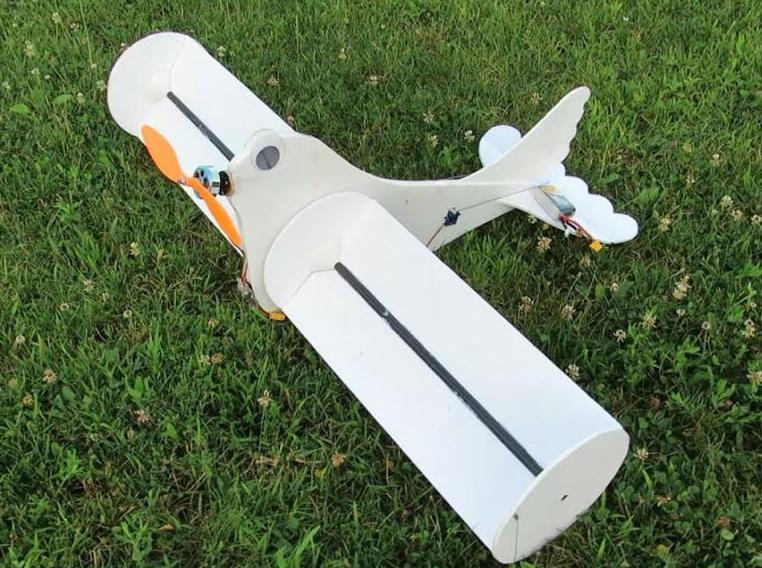
Выводы и перспективы
Сейчас точные аналоги парусов Флеттнера установлены в качестве вспомогательных движителей на немецком грузовом судне «E-Ship-1». А также их усовершенствованная модель используется на яхте «Алсион», принадлежащей фонду Жака-Ива Кусто.
Таким образом, в настоящее время существует два типа движителей системы Турбопарус. Обычный роторный парус, изобретенный Флеттнером в начале XX в., и его модернизированная версия от Жака-Ива Кусто. В первой модели результирующая сила возникает снаружи вращающихся цилиндров; во втором более сложном варианте электронасосы создают разницу давления воздуха внутри полой трубы.
Первый турбопарус способен давать ход судну лишь при боковом ветре. Именно по этой причине турбопаруса Флеттнера не получили распространения в мировом судостроении. Конструктивная особенность турбопаруса от Кусто позволяет получить движущую силу независимо от направления ветра. Оборудованное такими движителями судно может плыть даже против ветра, что является неоспоримым преимуществом как над обычными парусами, так и над роторными. Но, даже несмотря на эти достоинства, система Кусто также не введена в производство.
Нельзя сказать, что в наши дни не предпринимаются попытки воплотить в жизнь идею Флеттнера. Имеется ряд любительских проектов. В 2010 году было построено третье в истории после «Букау» и «Алсион» судно с роторными парусами – 130-метровый немецкий грузовик класса Ro-Lo. Двигательная система судна представлена двумя парами вращающихся роторов и сцепкой из дизелей на случай штиля и для создания дополнительной тяги. Роторные паруса играют роль вспомогательных двигателей: для судна водоизмещением 10,5 тысяч тонн четырех ветросиловых башен на палубе недостаточно. Тем не менее, эти устройства позволяют сэкономить до 40% топлива на каждом рейсе.
А вот система Кусто несправедливо предана забвению, хотя экономическая целесообразность проекта была доказана. На сегодняшний день «Алсион» — единственный полноценный корабль с таким типом движителя. Представляется неясным, почему система не используется в коммерческих целях, в частности на грузовых судах, ведь она позволяет экономить до 30% дизельного горючего, т.е. деньги.
